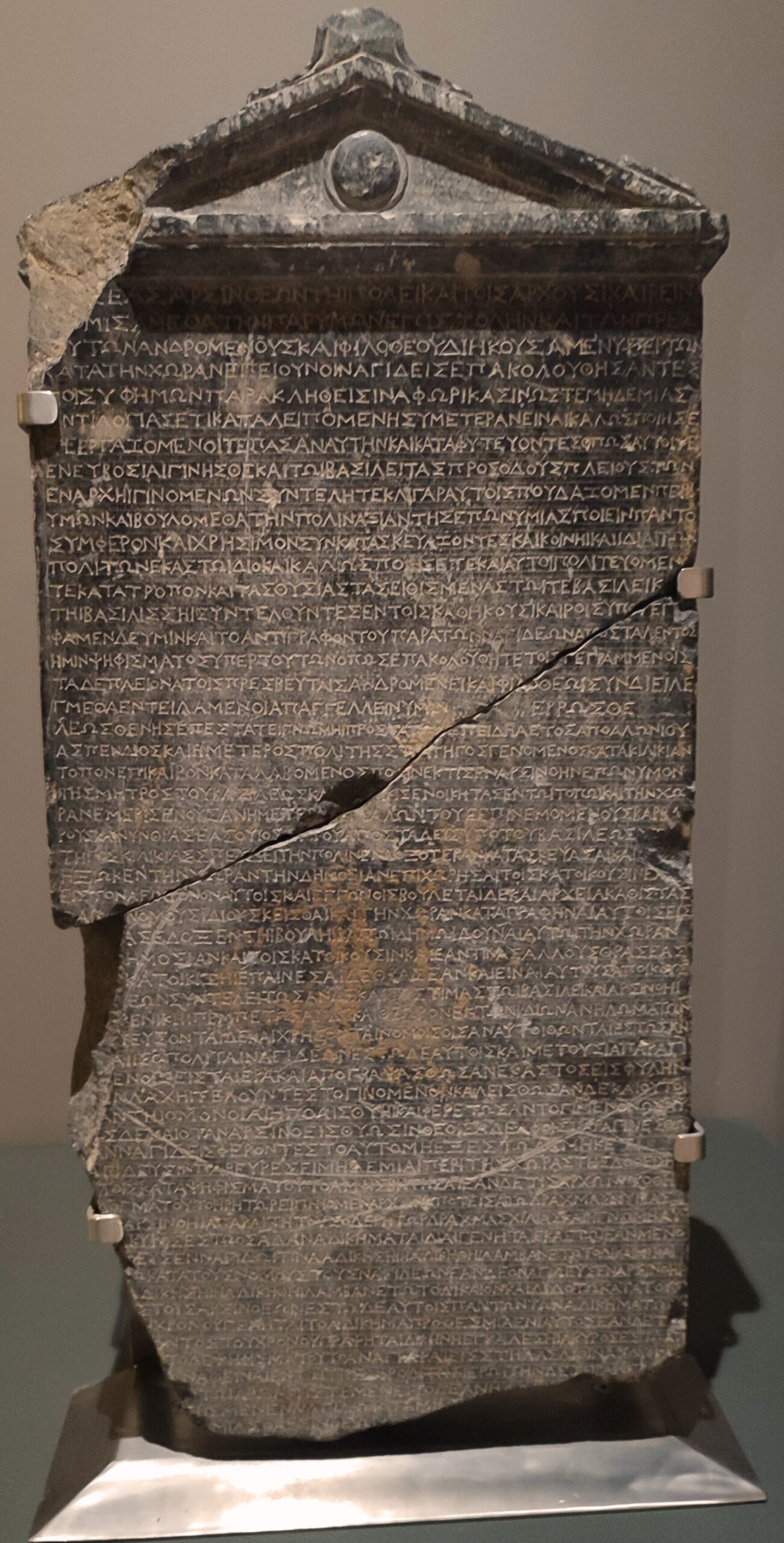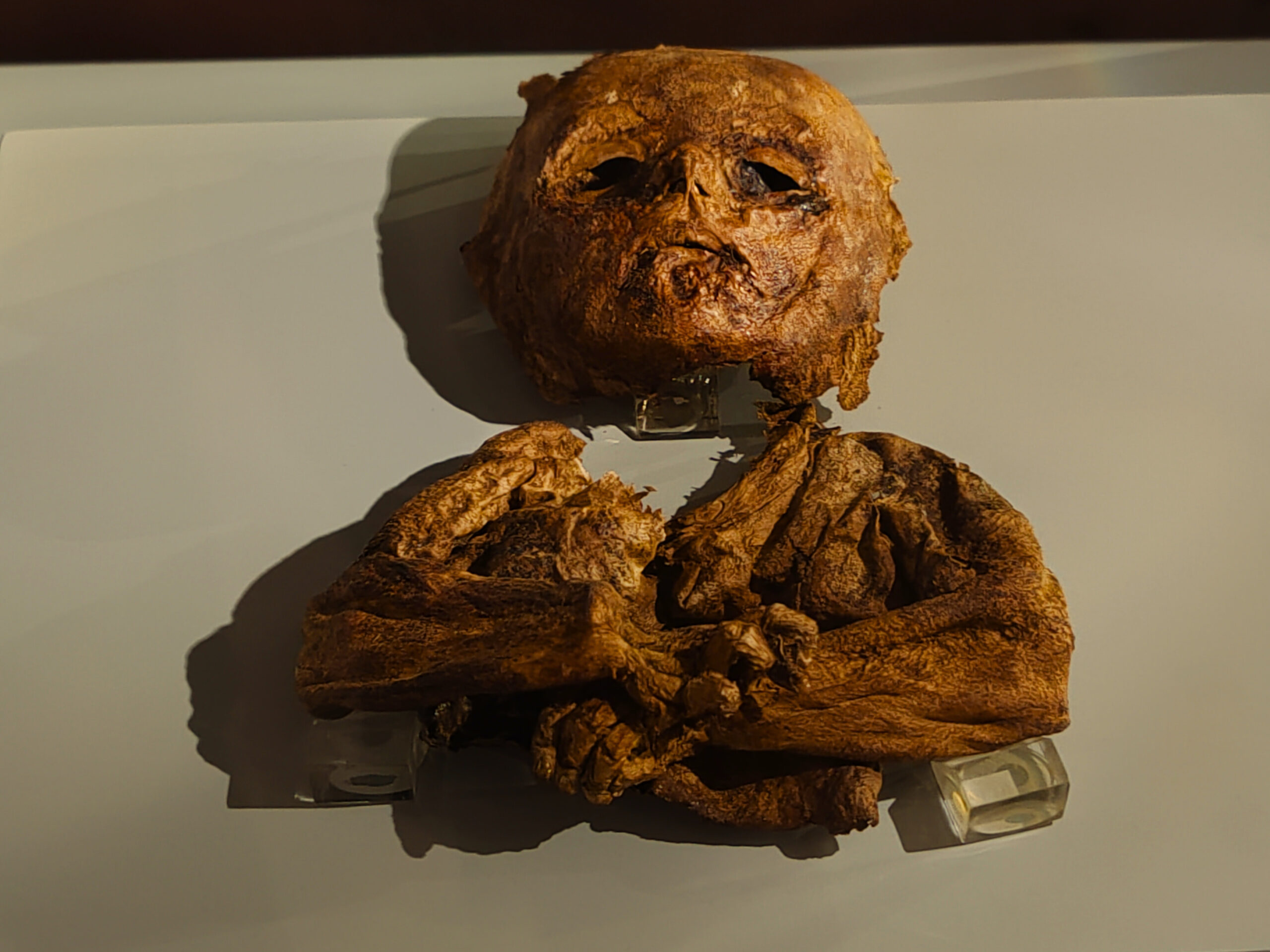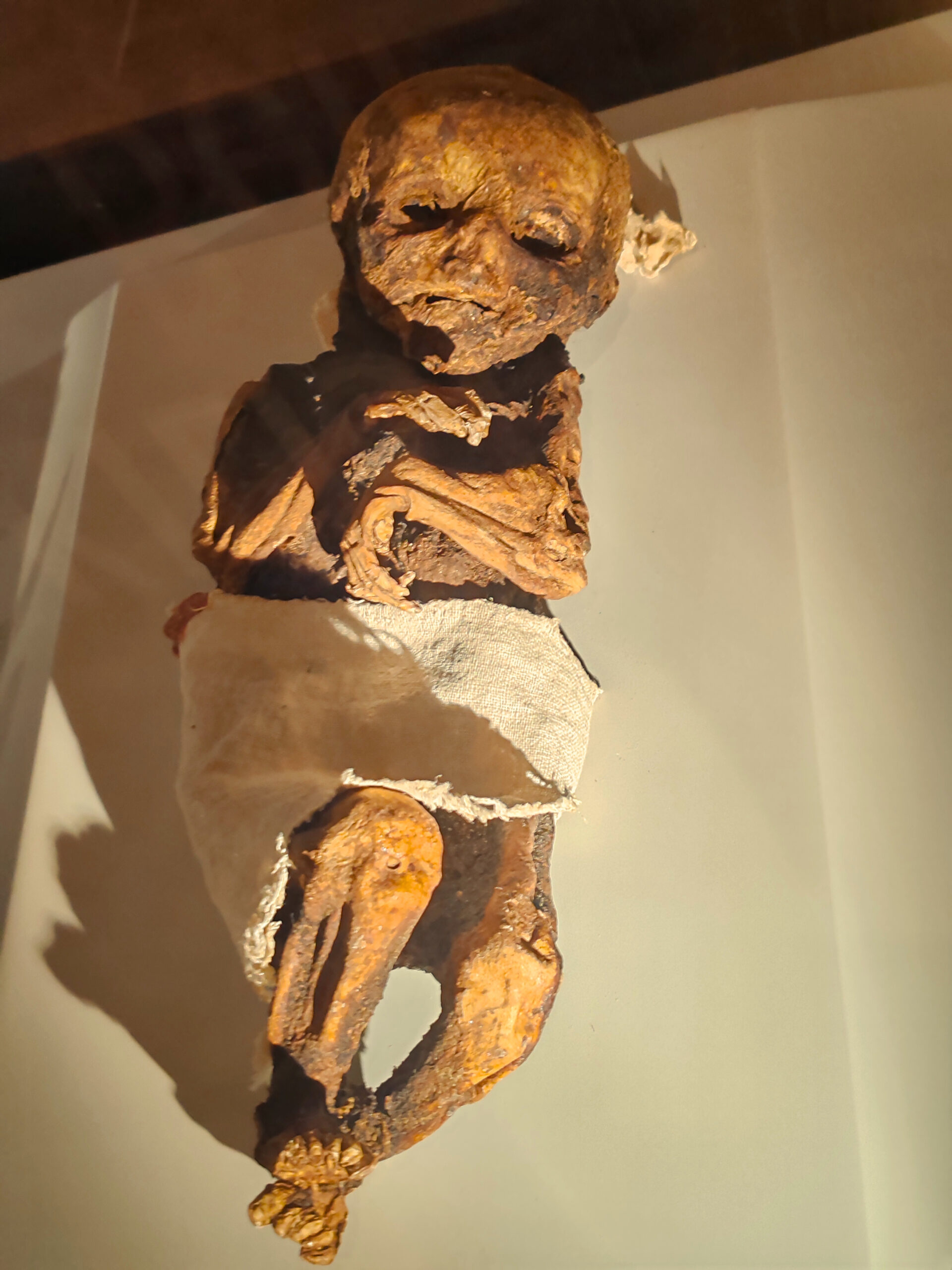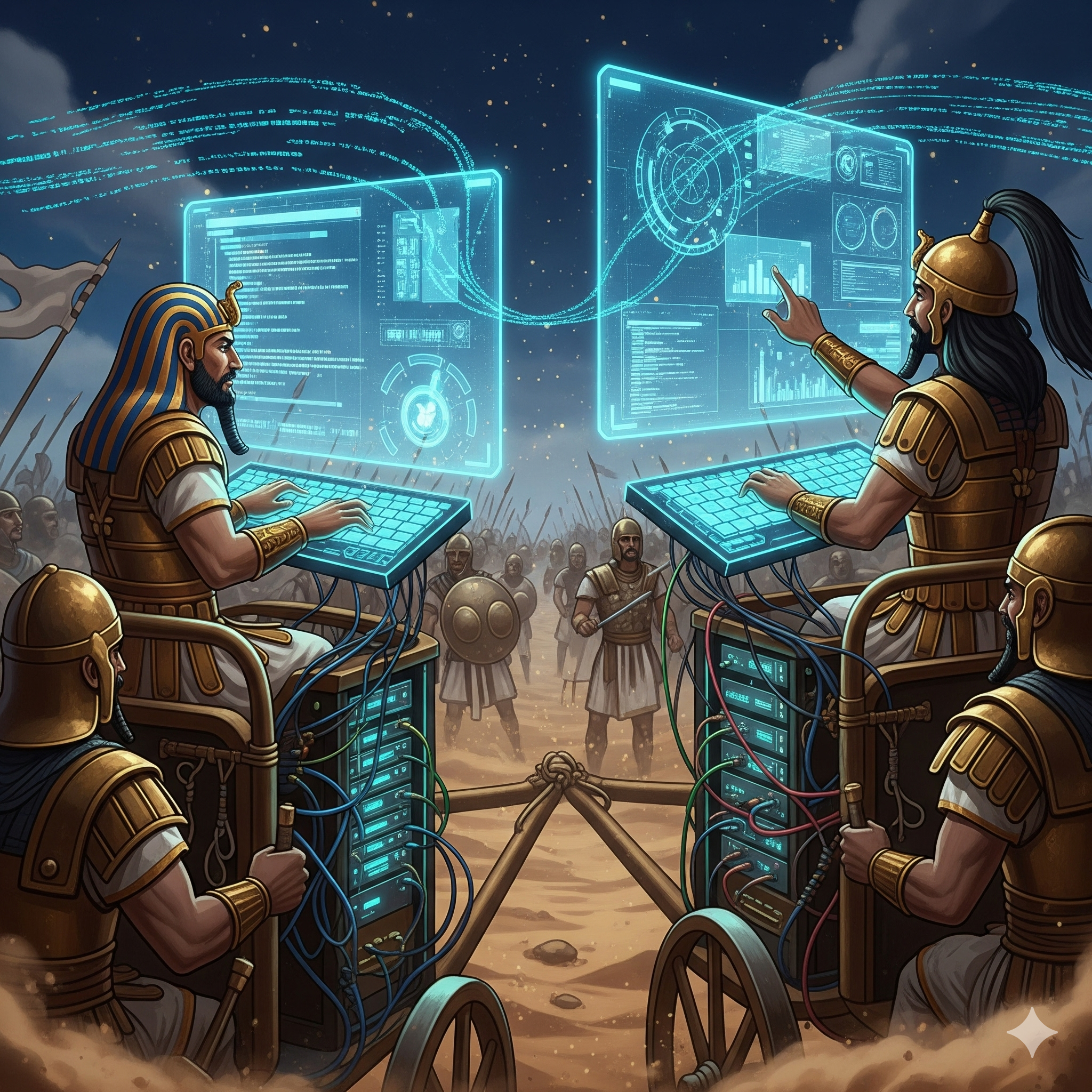Artifact of Inevitability
Slogan: It outlived us before we met.
Gaze Through the Air
You stand before the marble slab in the Mersin Museum, and it gazes at you. Not you at it—it at you. Its pale surface, weathered by the winds of Cilicia, holds carved lines like scars of time. This is no mere stone. It’s a portal where the 3rd century BCE collides with your breath, open to the museum’s light. The inscription from Nagidos—a treaty between cities long turned to dust—still whispers of disputes, ambitions, and deals that outlasted those who made them. You feel time compress, and your own life seems but a shadow on this marble. Why are you here? To see or to be seen?
Matter and Myth
The marble stele, carved around 270–260 BCE, is a piece of limestone born in the depths of the Taurus Mountains, where tectonic plates clashed for millions of years to birth Cilicia. Its size is modest, about a meter tall, though exact dimensions are lost in archival fog, like much of Nagidos. The surface is smooth, but time and the sea have left their marks—fine cracks, like wrinkles on an old man’s face. Letters, etched in precise ancient Greek script, carry the text of a treaty: Nagidos yields land to Arsinoe but retains the title of “mother city,” while citizens gain equal rights—isopoliteia. These aren’t just words but a Ptolemaic diplomatic dance, balancing pride and submission.
Found in Paşabeleni among ruins barely distinguishable from stones, it was unearthed through the work of Serra Durugönül, a professor at Mersin University. Now it resides in the museum, bathed in soft lamplight. Its origin is mythic: they say it stood in Nagidos’ square, where merchants and priests read it, nodding in agreement or grumbling in discontent. This isn’t just marble—it’s a code, encrypting a deal between two cities that long ago dissolved into sand.
Eye of the Past
Imagine: Thraseas, son of Aetos, strategos of Cilicia, dictates the text. A sweltering day, 260 BCE. The sea breeze carries the scent of salt, and a crowd murmurs on Paşabeleni hill. Nagidos is losing land, and its citizens are angry—their acropolis, their vineyards, their Aphrodite now share space with newborn Arsinoe. A scribe, hunched over a wax tablet, scratches words meant to soothe: “Arsinoe is your daughter, Nagidos the mother.” A stonemason, hands smelling of dust, carves the letters into marble, unaware his work will outlive empires. A priest of Aphrodite, perhaps, blesses the stele, hoping the goddess will keep the peace. Far off, pirates sharpen their blades, ready to plunder both cities.
The stele saw it all: elders’ disputes, Ptolemy’s soldiers’ steps, sunsets over island Nagidos. It stood when Alexander marched through Cilicia and stayed silent when pirates burned Nagidos. Merchants’ hands touched it, rains washed it, sand buried it. It was a witness when people forgot what they fought over and remained when their bones became part of the earth. This marble is an eye that saw the birth and death of worlds, and now it looks at you, asking: what do you see in it?
Legacy in Dust
This inscription is more than an artifact. It’s a time machine frozen in marble. It speaks of compromises we make to survive and how even they turn to dust. Nagidos and Arsinoe are gone, their citizens long shadows, but this stone still holds their voices. It reminds us: all we build—cities, laws, dreams—are but fleeting patterns in the wind. Yet there’s a strange beauty in this, like code that runs after the servers shut down.
The stele is a mirror of our own fragility. We, like Nagidos’ people, argue over boundaries, make plans, mint our “coins” in digital clouds. But what will remain? A QR code on an abandoned server? Or perhaps nothing—just dust that gazes at us, like this inscription. It teaches us not to cling to eternity but to find meaning in what slips away, like sand through fingers.
How Did We Get Here?
Finding the stele is simple, but it takes intent. Head to the Mersin Archaeological Museum (Yenice, 33090 Toroslar/Mersin, Turkey). Entry costs about 5 euros, and the museum is open from 8:30 AM to 5:00 PM, closed Mondays. The inscription waits in a hall, surrounded by other Cilician fragments: coins with grapevines, terracotta vessels, jewelry. Look for it under soft lighting, near a plaque with the text translated into Turkish. Want more? From Mersin, a bus to the city center and a taxi to the museum take about 20 minutes. From Antalya or Anamur, drive the D.400 highway to Bozyazı to see Paşabeleni, but the real story is in the museum.
Tip: Stand before the stele in silence. Let its lines tell you of disputes long settled, still echoing in your reflection.
#Nagidos #MarbleInscription #ArtifactOfInevitability #MersinMuseum #Cilicia #Antiquity #Archaeology #Paşabeleni #Aphrodite #Ptolemies #History #VoiceOfRuins #DustOfTime #ForgottenEpochs #SeaOfDust #ShadowsOfThePast


Our Telegram-channel: Voice Of Ruins https://t.me/Voice_Of_Ruins
Our Instagram: Voice Of Ruins https://www.instagram.com/voiceofruins/
Our group on Facebook: Voice Of Ruins https://www.facebook.com/share/g/16aitn9utM/
Our site: Voice Of Ruins https://www.voiceofruins.org








Leave a Reply